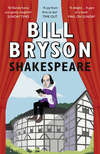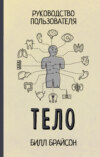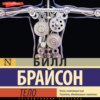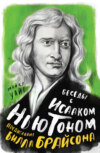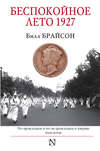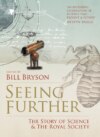Читать книгу: «Shakespeare»

Copyright
William Collins
An imprint of HarperCollinsPublishers 1 London Bridge Street London SE1 9GF
www.harpercollins.co.uk
This HarperPress edition published 2008
First published in Great Britain by HarperPress in 2007
Copyright © Bill Bryson 2007
Bill Bryson asserts the moral right to be identified as the author of this work
A catalogue record for this book is available from the British Library
Find out more about HarperCollins and the environment at
www.harpercollins.co.uk/green
All rights reserved under International and Pan-American Copyright Conventions. By payment of the required fees, you have been granted the non-exclusive, non-transferable right to access and read the text of this e-book on screen. No part of this text may be reproduced, transmitted, downloaded, decompiled, reverse engineered, or stored in or introduced into any information storage and retrieval system, in any form or by any means, whether electronic or mechanical, now known or hereinafter invented, without the express written permission of HarperCollins e-books.
Ebook Edition © April 2012 ISBN: 9780007368969
Version 2016-04-22
This book is sold subject to the condition that it shall not, by way of trade or otherwise, be lent, re-sold, hired out or otherwise circulated without the publisher’s prior consent in any form of binding or cover other than that in which it is published and without a similar condition including this condition being imposed on the subsequent purchaser.
Table of Contents
Cover Page
Title Page
Copyright
Dedication
Foreword
Chapter One: In Search of William Shakespeare
Chapter Two: The Early Years, 1564–1585
Chapter Three: The Lost Years, 1585–1592
Chapter Four: In London
Chapter Five: The Plays
Chapter Six: Years of Fame, 1596–1603
Chapter Seven: The Reign of King James, 1603–1616
Chapter Eight: Death
Chapter Nine: Claimants
Select Bibliography
Acknowledgements
About the Author
Praise
By the same author
About the Publisher
To Finley and Molly and in memory of Maisie
Foreword
A FEW YEARS AGO, a kindly New York publisher named James Atlas approached me out of the blue and asked me if I would like to write a biography for a series of books he was launching, to be called Eminent Lives.
Each book in the series was to be about forty thousand words, considerably less than half the length of a conventional biography. The idea was that each book would be long enough to have some substance while yet remaining concise.
James sent me a list of the subjects that had already been assigned. I was disappointed to find that nearly all the figures that jumped to my mind as candidates had already been taken. It was only when I went through the list a second time that I realized that no one had selected William Shakespeare, and impetuously I offered to take him on. To my surprise, and slight subsequent panic, James readily assented.
I hardly need point out that I am not a Shakespearean authority, but luckily Britain is full of people who are, and prudently I turned to them. The book that follows has almost nothing to do with what I think of William Shakespeare (though I admire him very much, of course), but is instead about what I learned of William Shakespeare from people who have spent lifetimes studying and thinking about him. I remain immensely grateful to them all, in particular to the great and scholarly Stanley Wells, now retired as chairman of the Shakespeare Birthplace Trust.
What is perhaps most extraordinary about William Shakespeare, bearing in mind that he has been dead for four hundred years, is how lively his world remains. Hardly a month goes by that there isn’t some fairly momentous claim or discovery relating to his life or work – never more so perhaps than in 2015 when a South African academic named Francis Thackeray suggested that Shakespeare may have filled the bowl of his little clay pipe with marijuana and possibly even cocaine. The assertion is based on an analysis of pipe remains found in the garden of New Place, Shakespeare’s last home in Stratford-upon-Avon. Never mind that nobody knows whether Shakespeare ever actually smoked a pipe or whether the pipe fragments belonged to him or his gardener or someone who owned the property later. Still, if it turns out that anybody in Elizabethan England was smoking cannabis and cocaine, that would be arresting news indeed, and it has to be said that no one would have examined the pipe fragments so fastidiously had there not been a Shakespeare connection.
Three other rather more notable events have bounced into the world of Shakespearean scholarship since this volume was first published and should perhaps be mentioned here. The most exciting – not to say incendiary – was the announcement in 2009 by the Shakespeare Birthplace Trust that it had acquired a new and definitive portrait of William Shakespeare.
Called the Cobbe portrait, it is the work of an unknown artist, and shows a youthful, rather dashing man of healthy complexion, dapper attire and a keen air of intelligence and sensitivity, all of which stands in sharp contrast to the other existing likenesses said to be of Shakespeare. The painting had previously hung in the Cobbe family’s ancestral home near Dublin and was long thought to be a portrait of Sir Walter Raleigh.
‘I was sceptical indeed to begin with,’ Stanley Wells told me at the time of the unveiling. ‘There are a lot of paintings that have been claimed to be of William Shakespeare on pretty dubious grounds. But the more I considered the evidence for this one, the more I grew persuaded. I would say I am 90 per cent convinced now it is genuine.’
It is a terribly exciting thought. Unfortunately, it has also encountered a good deal of criticism. Sir Roy Strong, the art historian, dismissed claims for the portrait’s authenticity as ‘codswallop’. Katherine Duncan-Jones of Oxford University thought the man in the portrait ‘too grand and courtier-like to be Shakespeare’, and in a long critical article for the Times Literary Supplement characterized the evidence as ‘not hugely compelling’. She suggested it was a portrait of a Sir Thomas Overbury.
At about the same time that the Cobbe portrait came to light, archaeologists from the Museum of London caused much scholarly excitement by announcing the discovery of the foundations of London’s first purpose-built theatre on the site of a disused warehouse in Shoreditch in east London. Built in 1576 and so indubitably original that it was called simply The Theatre, it is the oldest theatre positively associated with Shakespeare and was probably where Romeo and Juliet was first performed.
Soon afterwards, archaeologists also found the foundations of a nearby theatre, with similar Shakespeare connections, called the Curtain. Only modest fragments of both theatres survive, but so little is known about the physical aspects of Elizabethan theatres that even the discovery of some small runs of brick and stone is a matter of excitement and value.
Also causing a pleasant stir was the rediscovery and return to Durham University of a missing First Folio of Shakespeare’s plays taken from the university library by a light-fingered opportunist in 1998. It had been gone for so long that most people had assumed it to be lost for ever. Happily, the volume was sent for a valuation to the Folger Shakespeare Library in Washington, DC, where it was recognized as the missing Durham volume. The Folger alerted the FBI and a man named Raymond Scott was arrested, tried and eventually sentenced to eight years in prison for the theft.
The folio, mercifully undamaged, is now back in the university library on Palace Green in Durham, where it had resided peacefully since 1664. The question of how many First Folios there are in the world is an interesting and surprisingly challenging one, and is discussed at some length in the pages that follow. Suffice it to say for the moment that the rediscovery of one missing volume is cause for rejoicing. I am faithfully assured that it will not be stolen again.
Chapter One In Search of William Shakespeare
BEFORE HE CAME into a lot of money in 1839, Richard Plantagenet Temple Nugent Brydges Chandos Grenville, second Duke of Buckingham and Chandos, led a largely uneventful life.
He sired an illegitimate child in Italy, spoke occasionally in the House of Commons against the repeal of the Corn Laws, and developed an early interest in plumbing (his house at Stowe, in Buckinghamshire, had nine of the first flush toilets in England), but otherwise was distinguished by nothing more than his glorious prospects and many names. But after inheriting his titles and one of England’s great estates, he astonished his associates, and no doubt himself, by managing to lose every penny of his inheritance in just nine years through a series of spectacularly unsound investments.
Bankrupt and humiliated, in the summer of 1848 he fled to France, leaving Stowe and its contents to his creditors. The auction that followed became one of the great social events of the age. Such was the richness of Stowe’s furnishings that it took a team of auctioneers from the London firm of Christie & Manson forty days to get through it all.
Among the lesser-noted disposals was a dark oval portrait, twenty-two inches high by eighteen wide, purchased by the Earl of Ellesmere for 355 guineas and known ever since as the Chandos portrait. The painting had been much retouched, and was so blackened with time that a great deal of detail was (and still is) lost. It shows a balding but not unhandsome man of about forty, who sports a trim beard. In his left ear he wears a gold earring. His expression is confident, serenely rakish. This is not a man, you sense, to whom you would lightly entrust a wife or grown daughter.
Although nothing is known about the origin of the painting or where it was for much of the time before it came into the Chandos family in 1747, it has been said for a long time to be of William Shakespeare. Certainly it looks like William Shakespeare – but then really it ought to, since it is one of the three likenesses of Shakespeare from which all others are taken.
In 1856, shortly before his death, Lord Ellesmere gave the painting to the new National Portrait Gallery in London as its founding work. As the gallery’s first acquisition, it has a certain sentimental prestige, but almost at once its authenticity was doubted. Many critics at the time thought the subject was too dark-skinned and foreign-looking – too Italian or Jewish – to be an English poet, much less a very great one. Some, to quote the late Samuel Schoenbaum, were disturbed by his ‘wanton’ air and ‘lubricious’ lips. (One suggested, perhaps a touch hopefully, that he was portrayed in stage make-up, probably in the role of Shylock.)
‘Well, the painting is from the right period – we can certainly say that much,’ Dr Tarnya Cooper, curator of sixteenth-century portraits at the gallery, told me one day when I set off to find out what we could know and reasonably assume about the most venerated figure of the English language. ‘The collar is of a type that was popular between about 1590 and 1610, just when Shakespeare was having his greatest success and thus most likely to sit for a portrait. We can also tell that the subject was a bit bohemian, which would seem consistent with a theatrical career, and that he was at least fairly well to do, as Shakespeare would have been in this period.’
I asked how she could tell these things.
‘Well, the earring tells us he was bohemian,’ she explained. ‘An earring on a man meant the same then as it does now – that the wearer was a little more fashionably racy than the average person. Drake and Raleigh were both painted with earrings. It was their way of announcing that they were of an adventurous disposition. Men who could afford to wore a lot of jewellery back then, mostly sewn into their clothes. So the subject here is either fairly discreet, or not hugely wealthy. I would guess probably the latter. On the other hand, we can tell that he was prosperous – or wished us to think he was prosperous – because he is dressed all in black.’
She smiled at my look of puzzlement. ‘It takes a lot of dye to make a fabric really black. Much cheaper to produce clothes that were fawn or beige or some other lighter colour. So black clothes in the sixteenth century were nearly always a sign of prosperity.’
She considered the painting appraisingly. ‘It’s not a bad painting, but not a terribly good one either,’ she went on. ‘It was painted by someone who knew how to prime a canvas, so he’d had some training, but it is quite workaday and not well lighted. The main thing is that if it is Shakespeare, it is the only portrait known that might have been done from life, so this would be what William Shakespeare really looked like – if it is William Shakespeare.’
And what are the chances that it is?
‘Without documentation of its provenance we’ll never know, and it’s unlikely now, after such a passage of time, that such documentation will ever turn up.’
And if not Shakespeare, who is it?
She smiled. ‘We’ve no idea.’
If the Chandos portrait is not genuine, then we are left with two other possible likenesses to help us decide what William Shakespeare looked like. The first is the copperplate engraving that appeared as the frontispiece of the collected works of Shakespeare in 1623 – the famous First Folio.
The Droeshout engraving, as it is known (after its artist, Martin Droeshout), is an arrestingly – we might almost say magnificently – mediocre piece of work. Nearly everything about it is flawed. One eye is bigger than the other. The mouth is curiously mispositioned. The hair is longer on one side of the subject’s head than the other, and the head itself is out of proportion to the body and seems to float off the shoulders, like a balloon. Worst of all, the subject looks diffident, apologetic, almost frightened – nothing like the gallant and confident figure that speaks to us from the plays.
Droeshout (or Drossaert or Drussoit, as he was sometimes known in his own time) is nearly always described as being from a family of Flemish artists, though in fact the Droeshouts had been in England for sixty years and three generations by the time Martin came along. Peter W.M. Blayney, the leading authority on the First Folio, has suggested that Droeshout, who was in his early twenties and not very experienced when he executed the work, may have won the commission not because he was an accomplished artist but because he owned the right piece of equipment: a rolling press of the type needed for copperplate engravings. Few artists had such a device in the 1620s.
Despite its many shortcomings, the engraving comes with a poetic endorsement from Ben Jonson, who says of it in his memorial to Shakespeare in the First Folio:
O, could he but have drawne his wit
As well in brasse, as he hath hit
His face, the Print would then surpasse
All that was ever writ in brasse.
It has been suggested, with some plausibility, that Jonson may not actually have seen the Droeshout engraving before penning his generous lines. What is certain is that the Droeshout portrait was not done from life: Shakespeare had been dead for seven years by the time of the First Folio.
That leaves us with just one other possible likeness: the painted, life-size statue that forms the centrepiece of a wall monument to Shakespeare at Holy Trinity Church in Stratford-upon-Avon, where he is buried. Like the Droeshout it is an indifferent piece of work artistically, but it does have the merit of having been seen and presumably passed as satisfactory by people who knew Shakespeare. It was executed by a mason named Gheerart Janssen, and installed in the chancel of the church by 1623 – the same year as Droeshout’s portrait. Janssen lived and worked near the Globe Theatre in Southwark in London, and thus may well have seen Shakespeare in life – though one rather hopes not, as the Shakespeare he portrays is a puffy-faced, self-satisfied figure, with (as Mark Twain memorably put it) the ‘deep, deep, subtle, subtle expression of a bladder’.
We don’t know exactly what the effigy looked like originally, because in 1749 the colours of its paintwork were ‘refreshed’ by some anonymous but well-meaning soul. Twenty-four years later, the Shakespeare scholar Edmond Malone, visiting the church, was horrified to find the bust painted, and ordered the churchwardens to have it whitewashed, returning it to what he wrongly assumed was its original state. By the time it was repainted again years later, no one had any idea of what colours to apply. The matter is of consequence because the paint gives the portrait not just colour but definition, as much of the detail is not carved on but painted. Under whitewash it must have looked rather like those featureless mannequins once commonly used to display hats in shop windows.
So we are in the curious position with William Shakespeare of having three likenesses from which all others are derived: two that aren’t very good by artists working years after his death, and one that is rather more compelling as a portrait but that may well be of someone else altogether. The paradoxical consequence is that we all recognize a likeness of Shakespeare the instant we see one, and yet we don’t really know what he looked like. It is like this with nearly every aspect of his life and character: he is at once the best known and least known of figures.
More than two hundred years ago, in a sentiment much repeated ever since, the historian George Steevens observed that all we know of William Shakespeare is contained within a few scanty facts: that he was born in Stratford-upon-Avon, produced a family there, went to London, became an actor and writer, returned to Stratford, made a will, and died. That wasn’t quite true then and it is even less so now, but it is not all that far from the truth either.
After four hundred years of dedicated hunting, researchers have found about a hundred documents relating to William Shakespeare and his immediate family – baptismal records, title deeds, tax certificates, marriage bonds, writs of attachment, court records (many court records – it was a litigious age) and so on. That’s quite a good number as these things go, but deeds and bonds and other records are inevitably bloodless. They tell us a great deal about the business of a person’s life, but almost nothing about the emotions of it.
In consequence there remains an enormous amount that we don’t know about William Shakespeare, much of it of a fundamental nature. We don’t know, for one thing, exactly how many plays he wrote or in what order he wrote them. We can deduce something of what he read, but don’t know where he got the books or what he did with them when he had finished with them.
Although he left nearly a million words of text, we have just fourteen words in his own hand – his name signed six times and the words ‘by me’ on his will. Not a single note or letter or page of manuscript survives. (Some authorities believe that a section of the play Sir Thomas More, which was never performed, is in Shakespeare’s hand, but that is far from certain.) We have no written description of him penned in his own lifetime. The first textual portrait – ‘he was a handsome, well-shap’t man: very good company, and of a very readie and pleasant smooth witt’ – was written sixty-four years after his death by a man, John Aubrey, who was born ten years after that death.
Shakespeare seems to have been the mildest of fellows, and yet the earliest written account we have of him is an attack on his character by a fellow artist. He appears to many biographers to have spurned his wife – famously he left her only his second-best bed in his will, and that as an apparent afterthought – and yet no one wrote more highly, more devotedly, more beamingly, of love and the twining of kindred souls.
We are not sure how best to spell his name – but then neither, it appears, was he, for the name is never spelled the same way twice in the signatures that survive. (They read as ‘Willm Shaksp’, ‘William Shakespe’, ‘Wm Shakspe’, ‘William Shakspere’, ‘Willm Shakspere’ and ‘William Shakspeare’. Curiously, one spelling he didn’t use was the one now universally attached to his name.) Nor can we be entirely confident how he pronounced his name. Helge Kökeritz, author of the definitive Shakespeare’s Pronunciation, thought it possible that Shakespeare said it with a short a, as in ‘shack’. It may have been spoken one way in Stratford and another in London, or he may have been as variable with the pronunciation as he was with the spelling.
We don’t know if he ever left England. We don’t know who his principal companions were or how he amused himself. His sexuality is an irreconcilable mystery. On only a handful of days in his life can we say with absolute certainty where he was. We have no record at all of his whereabouts for the eight critical years when he left his wife and three young children in Stratford and became, with almost impossible swiftness, a successful playwright in London. By the time he is first mentioned in print as a playwright, in 1592, his life was already more than half over.
For the rest, he is a kind of literary equivalent of an electron – forever there and not there.
To understand why we know as little as we do of William Shakespeare’s life, and what hope we have of knowing more, I went one day to the Public Record Office – now known as the National Archives – at Kew, in west London. There I met David Thomas, a compact, cheerful, soft-spoken man with grey hair, the senior archivist. When I arrived, Thomas was hefting a large, ungainly bound mass of documents – an Exchequer memoranda roll from the Hilary (or winter) term of 1570 – onto a long table in his office. A thousand pages of sheepskin parchment, loosely bound and with no two sheets quite matching, it was an unwieldy load requiring both arms to carry. ‘In some ways the records are extremely good,’ Thomas told me. ‘Sheepskin is a marvellously durable medium, though it has to be treated with some care. Whereas ink soaks into the fibres on paper, on sheepskin it stays on the surface, rather like chalk on a blackboard, and so can be rubbed away comparatively easily.
‘Sixteenth-century paper was of good quality, too,’ he went on. ‘It was made of rags and was virtually acid free, so it has lasted very well.’
To my untrained eye, however, the ink had faded to an illegible watery faintness, and the script was of a type that was effectively indecipherable. Moreover the writing on the sheets was not organized in any way that aided the searching eye. Paper and parchment were expensive, so no space was wasted. There were no gaps between paragraphs – indeed, no paragraphs. Where one entry ended, another immediately began, without numbers or headings to identify or separate one case from another. It would be hard to imagine less scannable text. To determine whether a particular volume contained a reference to any one person or event, you would have to read essentially every word – and that isn’t always easy even for experts like Thomas, because handwriting at the time was extremely variable.
Elizabethans were as free with their handwriting as they were with their spelling. Handbooks of handwriting suggested up to twenty different – often very different – ways of shaping particular letters. Depending on one’s taste, for instance, a letter d could look like a figure eight, a diamond with a tail, a circle with a curlicue, or any of fifteen other shapes. A’s could look like h’s, e’s like o’s, f’s like s’s and l’s – in fact, nearly every letter could look like nearly every other. Complicating matters further is the fact that court cases were recorded in a distinctive lingua franca known as court hand – ‘a peculiar clerical Latin that no Roman could read’, Thomas told me, smiling. ‘It used English word order but incorporated an arcane vocabulary and idiosyncratic abbreviations. Even clerks struggled with it because when cases got really complicated or tricky, they would often switch to English for convenience.’
Although Thomas knew he had the right page and had studied the document many times, it took him a good minute or more to find the line referring to ‘John Shappere alias Shakespere’ of ‘Stratford upon Haven’, accusing him of usury. The document is of considerable importance to Shakespeare scholars, for it helps to explain why in 1576, when Will was twelve years old, his father abruptly retired from public life (about which more in due course), but it was only found in 1983 by a researcher named Wendy Goldsmith.
There are over a hundred miles of records like this in the National Archives – nearly ten million documents altogether – in London and in an old salt mine in Cheshire, not all of them from the relevant period, to be sure, but enough to keep the most dedicated researcher busy for decades.
The only certain way to find more would be to look through all the documents. In the early 1900s an odd American couple, Charles and Hulda Wallace, decided to do just that. Charles Wallace was an instructor in English at the University of Nebraska who just after the turn of the century, for reasons unknown, developed a sudden and lasting fixation with determining the details of Shakespeare’s life. In 1906 he and Hulda made the first of several trips to London to sift through the records. Eventually they settled there permanently. Working for up to eighteen hours a day, mostly at the Public Record Office on Chancery Lane, as it then was, they pored over hundreds of thousands – Wallace claimed five million* – documents of all types: Exchequer memoranda rolls, property deeds, messuages, pipe rolls, plea rolls, conveyancings and all the other dusty hoardings of legal life in sixteenth- and early-seventeenth-century London.
Their conviction was that Shakespeare, as an active citizen, was bound to turn up in the public records from time to time. The theory was sound enough, but when you consider that there were hundreds of thousands of records, without indexes or cross references, each potentially involving any of 200,000 citizens; that Shakespeare’s name, if it appeared at all, might be spelled in some eighty different ways, or blotted or abbreviated beyond recognition; and that there was no reason to suppose that he had been involved in London in any of the things – arrest, marriage, legal disputes and the like – that got one into the public records in the first place, the Wallaces’ devotion was truly extraordinary.
So we may imagine a muffled cry of joy when in 1909 they came across a litigation roll from the Court of Requests in London comprising twenty-six assorted documents that together make up what is known as the Belott–Mountjoy (or Mountjoie) case. All relate to a dispute in 1612 between Christopher Mountjoy, a refugee Huguenot wigmaker, and his son-in-law, Stephen Belott, over a marriage settlement. Essentially, Belott felt that his father-in-law had not given him all that he had promised, and so he took the older man to court.
Shakespeare, it appears, was caught up in the affair because he had been a lodger in Mountjoy’s house in Cripplegate in 1604 when the dispute arose. By the time he was called upon to give testimony eight years later, he claimed – not unreasonably – to be unable to remember anything of consequence about what had been agreed between his landlord and the landlord’s son-in-law.
The case provided no fewer than twenty-four new mentions of Shakespeare and one precious additional signature – the sixth and so far last one found. Moreover, it is also the best and most natural of his surviving signatures. This was the one known occasion when Shakespeare had both space on the page for a normal autograph and a healthily steady hand with which to write it. Even so, as was his custom, he writes the name in an abbreviated form: ‘Willm Shaksp’. It also has a large blot on the end of the surname, probably because of the comparatively low quality of the paper. Though it is only a deposition, it is also the only document in existence containing a transcript of Shakespeare speaking in his own voice.
The Wallace find, reported the following year in the pages of the University of Nebraska Studies (and forever likely to remain, we may suppose, that journal’s greatest scoop), was important for two other reasons. It tells us where Shakespeare was living at an important point in his career: in a house on the corner of Silver and Monkswell Streets near St Aldermanbury in the City of London. And the date of Shakespeare’s deposition, 11 May 1612, provides one of the remarkably few days in his life when we can say with complete certainty where he was.
The Belott–Mountjoy papers were only part of what the Wallaces found in their years of searching. It is from their work that we know the extent of Shakespeare’s financial interests in the Globe and Blackfriars theatres, and of his purchase of a gatehouse at Blackfriars in 1613, just three years before his death. They found a lawsuit in which the daughter of John Heminges, one of Shakespeare’s closest colleagues, sued her father over some family property in 1615. For Shakespeare scholars these are moments of monumental significance.
Бесплатный фрагмент закончился.

